MILLION HOPE the largest wreck in the Red Sea
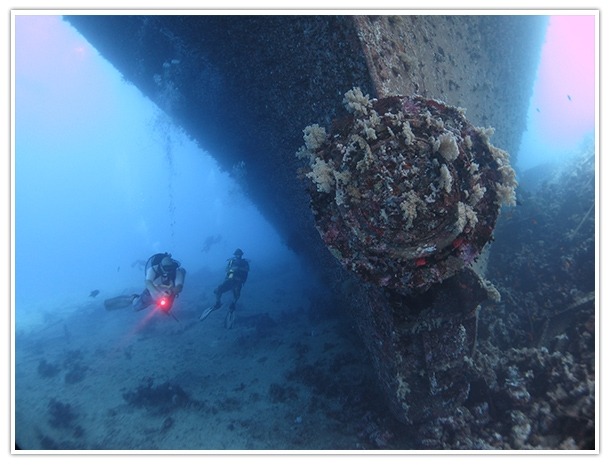 The Million Hope was heading from the Port of Aqaba to Taiwan with a cargo of potash. On June 20, 1996, she hit a reef near Nabq and sank.
The Million Hope was heading from the Port of Aqaba to Taiwan with a cargo of potash. On June 20, 1996, she hit a reef near Nabq and sank.
Coordinates: 28-03-42 N, 34-26-40 E.
And yes! Million Hope is so big, its visible from space. https://maps.app.goo.gl/q57iPM52eXZFCMiv6
The bulk carrier was launched in Japan in 1972 under the name Ryusei Maru. The vessel was additionally equipped for transporting cars. It was a huge ship: displacement 26181, waterline length 174.6 m and width 24.8 m. 5 cargo holds were located in front of the superstructure. Between the holds, four massive cargo cranes rose high up. The vessel had 2 six-cylinder diesel engines with a total power of 11600 hp and developed a speed of 17 knots.
Over the course of its history, the vessel changed several owners until, in 1996, it was acquired by the Cypriot company Aksonas Shipping Co Ltd for £1.36 million. At this point, the vessel received its last name, Million Hope, and was immediately insured for £4.1 million. Six weeks after the purchase, a shipwreck occurred, as a result of which the Million Hope was presumed to be a total loss.
Shipwreck
On June 19, 1996, Million Hope left the port of Aqaba for Taiwan with 26,000 tons of potash and phosphates on board. In poor visibility, the vessel ran into a coastal reef near the Nabq area, three miles north of Sharm el-Sheikh.
On June 24, 1996, the following entry appeared in Lloyd's News:
“Million Hope (Cyprus)
June 21. According to Cairo Radio: Egyptian authorities are expressing concern about the possible leakage of 23,000 tons of potash and phosphates, as well as 700 tons of fuel from the holds of the cargo ship Million Hope, which sank off the coast of the Sinai Peninsula. All 25 crew members were rescued by the Egyptian Navy in an operation that lasted more than 20 hours. On the way from the Jordanian port of Aqaba to Taiwan, the ship hit a reef near the Egyptian resort of Sharm El Sheikh. The ship's crew, consisting mostly of Filipinos, gathered on the bridge and refused to leave the ship in distress until it became apparent that it would sink. After the rescue, some crew members accused the captain of violating shipping rules and maintaining high speed in poor visibility conditions.”
A tender was announced to salvage the cargo, valued at £1.3 million. The rescue operation was successfully carried out, and the threat to the reefs passed.
10 years later, the Chinese company made an attempt to cut the wreck for scrap metal. As a result of this operation, the Million Hope lost its deck superstructure and a huge propeller. The bow of the vessel was separated from the hull and fell on its side.
In addition, 20 meters off the stern of the vessel, a massive crawler crane appeared at the bottom. The crane's openwork boom is now overgrown with soft corals and is home to a colony of glassfish and numerous lionfish. Another great object for underwater photographers!
Diving Million Hope
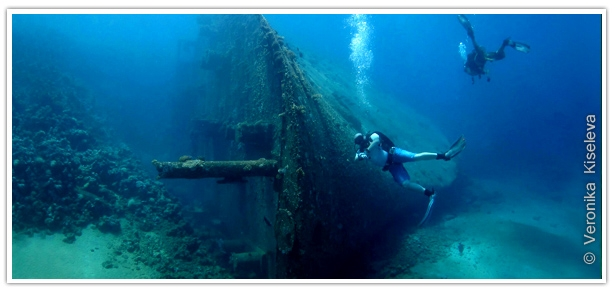
Some of the Million Hope superstructures rise above the surface. The vessel is on an even keel with a slight list to port. That is, it is tilted away from the reef. The starboard side rests on the reef, and the keel lies on the bottom at a depth of 19-24 m. All cargo holds are open and empty.
Swimming along the bow of the vessel, you will see the consequences of hitting the reef. The steel sheets of the plating are ripped open. The hole goes further along the starboard side. The bow of the vessel lies on its side. It is separated from the hull by a whole labyrinth of large metal structures. Here you need to move with great caution: the edges of many steel sheets are very sharp, and the passages are narrow.
If you look closely, you will find the remains of another ship under the keel of the Million Hope. This is the transport vessel Hey Daroma.
Hey Daroma
The general transport vessel LAIRDS LOCH was launched in August 1944 at the shipyard of Ardossan Dockyards Ltd. The ship began work on ferry services in Scotland. For many years, Lardis Loch has carried passengers and cargo on the Glasgow to Derrick line. In 1969, the ship was purchased by the Israeli company Sefinot Ltd of Eilat and renamed Hey Daroma. Delivering water to Sharm El Sheikh was her main task.
On the night of September 3, 1970, Hey Daroma hit the reef in the same place where the Million Hope crashed 26 years later. According to another, more romantic version, Hey Daroma fell victim to Egyptian frogmen.
Aftermath of the accident, Hey Daroma was washed up on the reef. Attempts to move the vessel off the reef, including with the help of heavy tractors, led to nothing. Winter storms threw the ship off the reef and it sank. For many years, the ship lay at the bottom, and in 1996, Hey Daroma was buried under the massive hull of the bulk carrier Million Hope. The remains of the bow of the ship lie a few meters in front of the giant stem of a brother in misfortune.
Let's continue diving at Million Hope
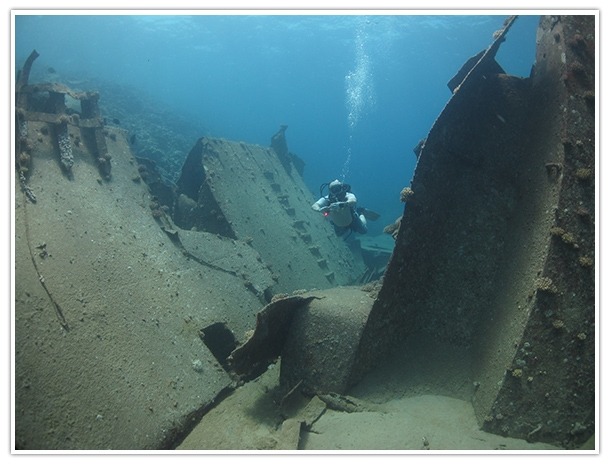
Following the port side of the ship, you will reach the stern. This is a long distance. In some places, the hull is damaged and you can look into the holds. The rudder has separated from the ship and lies in few meters on the bottom. The space under the rudder attachment became home to a whole colony of various fish. The propeller was separated and lifted by the Chinese.
Next, climb to the deck level - 4-8 m. All deck equipment, including a massive winch with large-diameter cables, remained untouched. Behind the winch you will see a hatch 2x2 m, through which you can get down. A series of portholes illuminate the vast room. From here you can get into the engine compartment. The engines remained in place, but traces of damage are visible everywhere. Going back to the deck is not very difficult.
Exploring the deck and entering the holds is only possible under ideal sea conditions. In the absence of waves, penetration into the holds is easy and it is enough to visit one to get an impression of the others. The holds are giant empty cubes with a maximum depth of 18 meters.
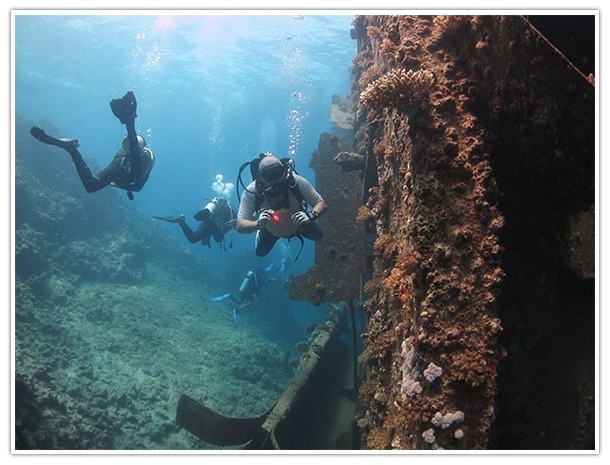
Million Hope is the largest wreck on the Red Sea. Diving on it will leave you with an indelible impression. Unfortunately, constant strong surf is a common occurrence in this part of the Strait of Tiran. Waves rolling onto the deck of the vessel create a suction effect. With the wave, water rushes into open hatches, and when the wave rolls back, water is ejected from them. A certain caution is required here, especially at low tide.
Dolphin organizes dives on this wonderful wreck for groups of at least 6 divers. Our dive boat must cross the Straits of Tiran from Jackson Reef to the wreck, provided that the sea is completely calm. Sometimes, the decision to go to the wreck is made by a general vote, when our dive boat is already at Tiran reefs and sea conditions allow.
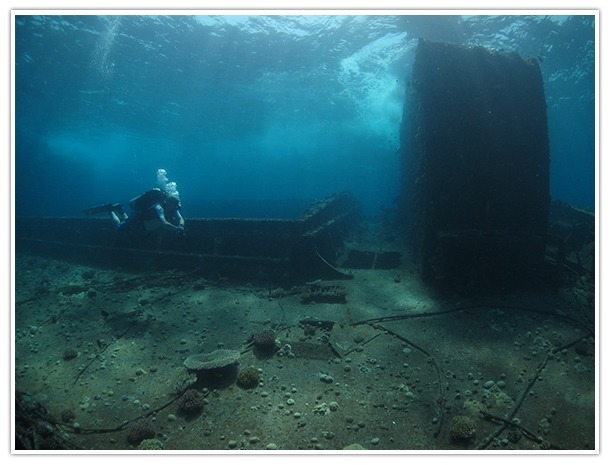

 Diving in Sharm el-Sheikh
Diving in Sharm el-Sheikh